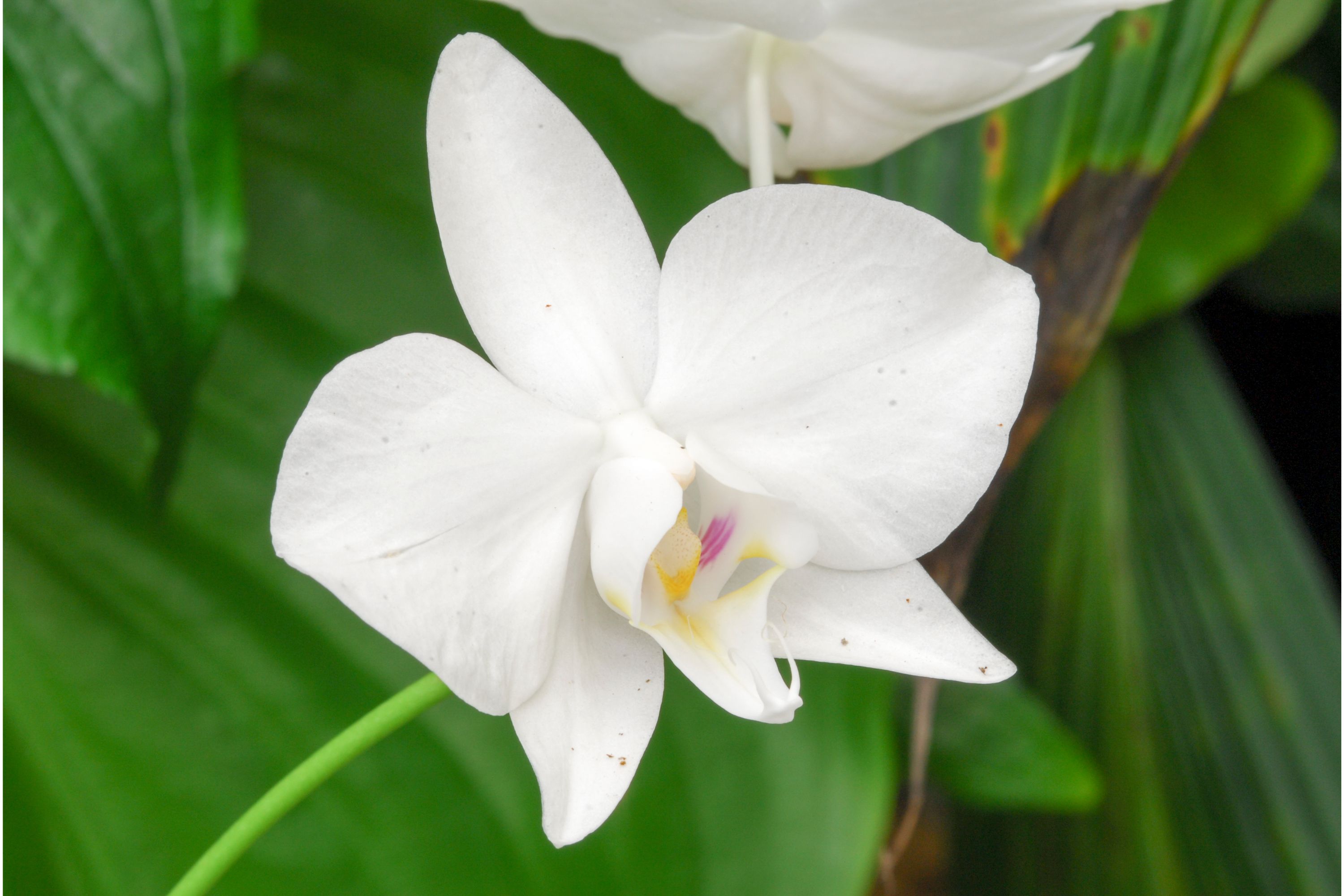Moth orchid
(Phalaenopsis aphrodite)

Description
Phalaenopsis aphrodite, commonly known as the moth orchid, is a beautiful epiphytic orchid species that belongs to the family Orchidaceae. The plant is native to the Philippines, Taiwan, and some other parts of Southeast Asia. Phalaenopsis aphrodite is a popular ornamental plant that is known for its stunning flowers and easy-to-grow nature. In this article, we will explore the plant's taxonomy, morphology, habitat, cultivation requirements, and other interesting facts. Taxonomy: The genus Phalaenopsis belongs to the tribe Vandeae, subfamily Epidendroideae, and family Orchidaceae. Phalaenopsis aphrodite was first described by J.J. Smith in 1905. The plant's specific epithet, aphrodite, refers to the Greek goddess of love and beauty. The common name, moth orchid, is derived from the plant's flowers' resemblance to moths. Morphology: Phalaenopsis aphrodite is an epiphytic orchid that has a sympodial growth habit. The plant has a short stem that grows horizontally and produces fleshy, oblong leaves. The leaves are dark green, glossy, and can grow up to 20 cm long and 8 cm wide. The plant's roots are thick, fleshy, and covered with a silvery-grey velamen that helps the plant absorb moisture and nutrients. The inflorescence of Phalaenopsis aphrodite is a raceme that can grow up to 80 cm long and produce up to 30 flowers. The flowers are large, measuring up to 10 cm in diameter, and have a characteristic three-lobed lip that gives them a moth-like appearance. The flowers come in various colors, including white, pink, purple, and yellow, and often have spots, stripes, or blotches. Habitat: Phalaenopsis aphrodite is native to the Philippines, Taiwan, and some other parts of Southeast Asia. The plant grows in the wild as an epiphyte on trees and rocks in humid forests at elevations of 500 to 2000 meters above sea level. In its natural habitat, the plant receives plenty of moisture and indirect sunlight. Cultivation: Phalaenopsis aphrodite is a popular ornamental plant that is easy to grow and care for. The plant prefers bright, indirect light and should be kept out of direct sunlight, which can scorch its leaves. The plant thrives in warm temperatures between 20 to 30 °C during the day and 15 to 20 °C at night. The plant should be watered regularly but should be allowed to dry out slightly between waterings. Overwatering can lead to root rot, so it's essential to ensure that the plant's potting mix is well-draining. Phalaenopsis aphrodite can be fertilized with a balanced fertilizer every two weeks during the growing season, and a high-phosphorus fertilizer during the flowering period. Propagation: Phalaenopsis aphrodite can be propagated by dividing the plant's clumps or by tissue culture. The best time to divide the plant is when it outgrows its pot or after flowering. The divided sections should be potted in a well-draining mix and kept in a warm, humid place until they have established roots. Interesting facts: Here are some interesting facts about Phalaenopsis aphrodite: Mythological inspiration: The plant's specific epithet, aphrodite, was named after the Greek goddess of love and beauty. Epiphytic nature: Like most orchids, Phalaenopsis aphrodite is an epiphytic plant that grows on other plants, mainly trees. Its roots are used to attach to the host plant and absorb water and nutrients from the air. Long inflorescence: The plant produces a long inflorescence that can grow up to 80 cm long and bear up to 30 flowers. Diverse flower colors: The plant's flowers come in various colors, including white, pink, purple, and yellow, with spots, stripes, or blotches. Fragrant flowers: The plant's flowers are fragrant and emit a sweet, fruity scent that attracts pollinators. Parent of many hybrids: Phalaenopsis aphrodite is one of the parent species of many popular hybrid orchids, including Phalaenopsis amabilis, Phalaenopsis bellina, and Phalaenopsis violacea. Used in Traditional Chinese Medicine: The plant's roots and stems are used in traditional Chinese medicine to treat ailments such as fever, cough, and sore throat. Used in cosmetics: The plant's extract is used in cosmetics and skincare products for its moisturizing and anti-aging properties. Easy to grow: Phalaenopsis aphrodite is an easy-to-grow plant that is ideal for beginners. It thrives in warm temperatures, bright, indirect light, and regular watering. Long lifespan: With proper care, Phalaenopsis aphrodite can live for several years and continue to produce stunning flowers year after year.
Taxonomic tree:







